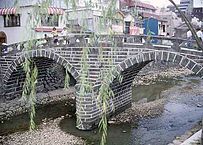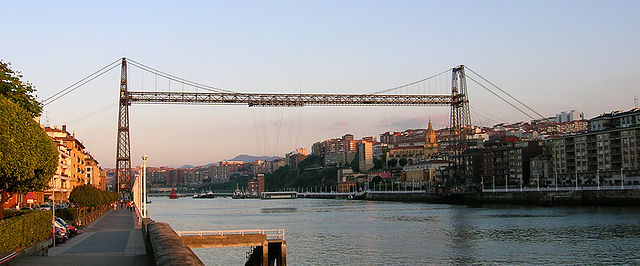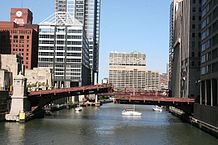Bridges - Puentes
Bridges are structures built to allow people and vehicles to pass over obstacles. An obstacle is something that is in the way. When we think of bridges, we most often think of those built over water. However, bridges may also extend over valleys, highways or railroad tracks.
A bridge span is the distance between supports. The word span is also used to mean extend across, such as "Rande's bridge spans la Ria de Vigo".
The substructure of a bridge consists of: abutments, piers, piles and anchorage.
- Abutments (contrafuertes): they are the supports at tthe ends of a bridge. They not only support the bridge itself, but also the earth at the ends of the bridge. They are usually made of reinforced concrete. They are sometimes referred to as end piers.
- Piers (pilares): they are vertical structural supports. They are used when more than one span is needed. they are positioned to keep the bridge from sagging.
- Piles (muelles): supports for a bridge must rest on a solid surface. When the earth under the bridge is not solid, piles are used. Piles are wood, metal or concrete members. They are driven down into the earth to a solid base. Piers and abutments are placed on top of them.
- Anchorage (anclaje):
Types of Bridges
The type of bridge constructed depends on how long the bridge must be and on the weight it must support. There are several common types of bridges:
- Truss bridge: As we have learned a truss is a triangular framework. Trusses may be used above or below the roadway to support the bridge. Trusses are also used in combination with other bridges, such as suspension bridges to give them additional support.
Truss bridge for a single track railway, converted to pedestrian use and pipeline support

(Dominio público)
- Arch bridge: the load of the bridge is transferred to the arch, which is supported on each end by an abutment. Single or multiple arches may be used.
Double arch stone bridge, Japan

(Dominio público)
- Beam bridge: Piers support spans of concrete slabs reinforced with steel girders.
Multispan plate girder bridge deck on concrete piers

(Dominio público)
- Cantilever bridge: Beams called cantilevers extend from the ends of the bridge. They are connected by a section called suspended span.
The Pierre Pflimlin bridge is a balanced cantilever made of concrete, shown here under construction.

(Dominio público)
- Suspension Bridge: These have two tall towers that support main cables that run the entire length of the bridge. The cables are secured by heavy concrete anchorages at each end. Suspender cables dropped from the main cables are attached to the roadway. These bridges are used to span long distances.
New Little Belt suspension bridge, 1970 Denmark

(Dominio público)
- Cable-stay bridge: These are similar to suspension bridges except the cables are connected directly to the roadway.
- Movable bridges: These bridges are designed so that a oprtion of the roadway can be moved to allow large water vessels to pass underneath. Bascule bridges open by tilting upward. Lift bridges have a section of roadway that moves up between towers and Swin bridges have a section that moves sideways.
- A transporter bridge, also known as a ferry bridge or aerial transfer bridge, is a type of movable bridge that carries a segment of roadway across a river. The gondola is slung from a tall span by wires or a metal frame.
Biscay Bridge-Transporter Bridge between Portugalete a Las Arenas - Areeta
The oldest ferry bridge in the world

...
